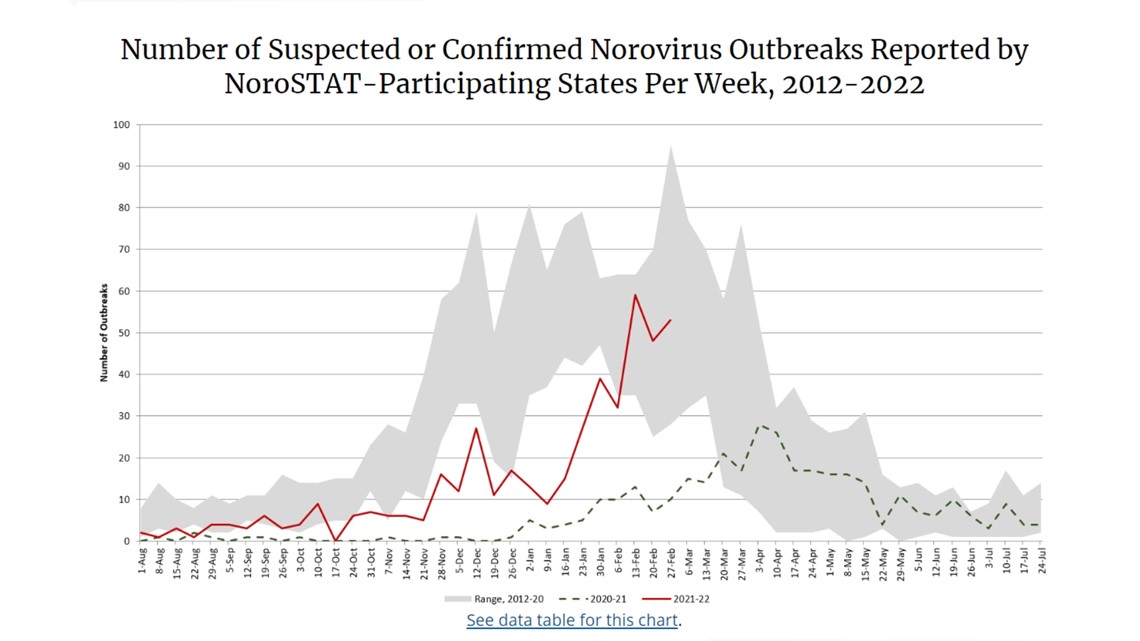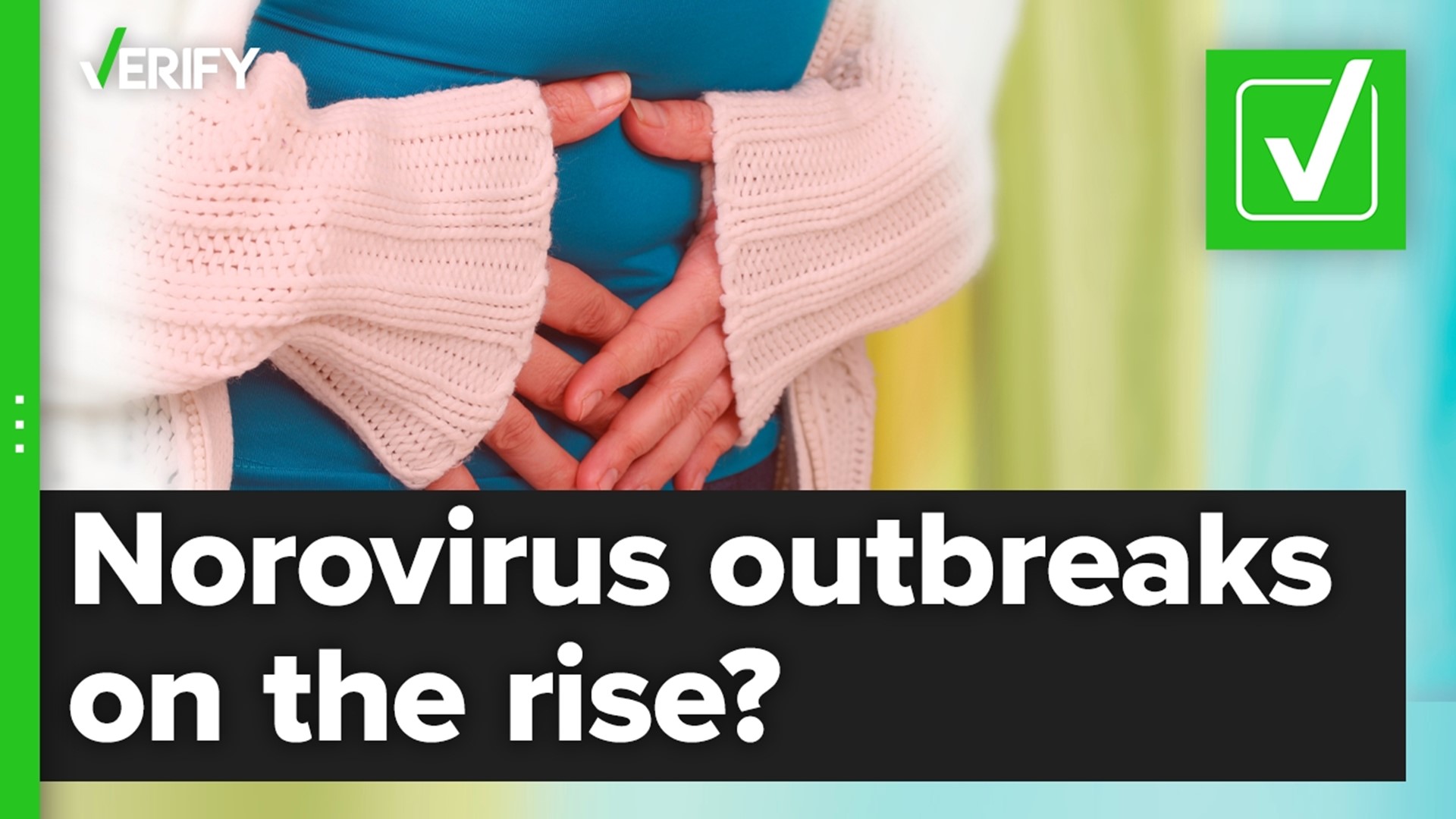If you’re suffering from an upset stomach, you might be wondering if COVID-19 is to blame. But another common virus could be causing your symptoms.
WebMD says U.S. outbreaks of norovirus, which is commonly referred to as the “stomach flu,” have “risen dramatically” since January 2022. Other news headlines are also claiming that norovirus cases have been on the rise in the U.S.
THE QUESTION
Have norovirus outbreaks increased in the U.S.?
THE SOURCES
- Centers for Disease Control and Prevention (CDC)
- U.S. Food and Drug Administration
- Paul Auwaerter, M.D., professor at Johns Hopkins University School of Medicine and clinical director of the infectious diseases division
- Washington State Department of Health
THE ANSWER
Yes, norovirus outbreaks have increased in the U.S.
WHAT WE FOUND
Norovirus is one of a number of viruses that can upset a person’s stomach and cause intestinal discomfort, Paul Auwaerter, M.D., professor at Johns Hopkins University School of Medicine and clinical director of the infectious diseases division, said.
The virus is very contagious, and people can be infected from direct contact with someone who has the virus, eating or drinking contaminated food or water, or touching contaminated surfaces and putting their hands in their mouth, according to the Centers for Disease Control and Prevention (CDC). The U.S. Food and Drug Administration (FDA) says food contaminated with norovirus may look, smell and taste normal.
The CDC defines a norovirus outbreak as “an occurrence of two or more similar illnesses resulting from a common exposure” that is either suspected or confirmed to be caused by norovirus.
Norovirus outbreaks are common, with about 2,500 reported in the U.S. every year. They can happen anytime, but occur most often from November through April, according to the CDC. Norovirus is sometimes called the “winter vomiting disease,” Auwaerter said.
“It's an illness that can come on abruptly, and cause rather dramatic nausea, diarrhea or both in people, and often remits just as quickly in 24 to 48 hours,” he added.
The CDC tracks norovirus outbreaks reported by 12 state health departments. From Aug. 1, 2020 through March 5, 2021, there were 78 norovirus outbreaks reported by these 12 states. During the same time period in 2021-2022, the states reported 448 norovirus outbreaks.
The number of weekly norovirus outbreaks also rose from below 10 in early January to above 50 in early March, data reported to the CDC show.
Though norovirus outbreaks have increased in recent months, levels have been “lower than normal” during the COVID-19 pandemic, a CDC spokesperson told VERIFY. The number of outbreaks reported so far in 2021-2022 is also below the range reported during the same time period over the previous eight years, the public health agency says.


Auwaerter said the recent increase in norovirus cases could be tied to people interacting more regularly as COVID-19 cases decline in many areas of the country.
Some people in states throughout the U.S. have also contracted norovirus by eating contaminated food, though CDC data show this is usually a less common way of contracting the virus.
The FDA is warning people about a multi-state norovirus outbreak linked to raw oysters from British Columbia. Oysters that are potentially contaminated have been distributed to more than a dozen U.S. states, and it’s possible that additional states received them, too. Those who order oysters from a restaurant or retailer should verify that the source is outside of two British Columbia harvest areas, and retailers are being asked to stop selling the oysters.
In Washington state, more than two dozen residents have reported norovirus-like illness after eating oysters harvested from British Columbia, according to the state department of health.
More from VERIFY: No, cold or rainy weather cannot make you sick

